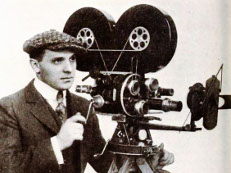“Victims of Alberto Fujimori’s death squads unearthed in Peru” by Chrystelle Barbier
In this article Barbier talks about the horrors left behind by Fujimori’s secret death squad. Colina Group was began by Fujimori to combat the Maoist Group, Sendero Luminoso, as well as opposing political figures, guerrilla groups, and trade unionists. Here Barbier tells the story of an activist from Santa, Peru. This activist, named Jesus Noriega, was the head of the “Campesinos Sin Tierra (Peasants without land). He was kidnapped along with other 8 local residents by the death squad at night in his own home. Sadly, they never returned home. Barbier interviews the activist’s dad, Jose Noriega, and he explains how he demanded justice along with the families of the other victims but the police did little to help. The father also explains how after searching for a long 19 years, they had finally found the remains of their children in 2011. In 2010, the complaints that these families and other victims had lodged finally brought some justice. Members of the Group Colina were brought to trial and were sentenced to 15 to 25 years in prison. One of these member did admit that these activists were murdered the night they were kidnapped and buried near Santa. Although he explained about the details, the information was not sufficient to find all of the remains. This group had left deep scars in many communities across Peru that some mothers even believed (before some of the remains were found) that their children were being held captive somewhere in the jungle or even in another continent.
This is just one of many human rights crimes the group had commited under Fujimori’s rule. Although the group was not known to exist until many years after these crimes, they played a key part in the terror that took place in the country between the 1990’s and 2000’s. This makes you think about the power that Fujimori held and the place where the members of this group were. Where they just following orders? Did they have a choice in the matter? Were they willing to commit such atrocities? These are a few questions that arise when thinking about the members and their situation. Regardless these crimes are unspeakable and deserve punishment.
http://www.theguardian.com/world/2011/sep/06/peru-human-rights-fujimori
“1991: Barrios Altos Massacre” by Michael Baney
Here we see another act by the Group Colina. The information on this article was described in detail in an old declassified US government document. The massacre, that took place in 1991 in the Barrios Altos neighborhood in Lima, was by far the most famous killings committed by the death squad. In this event, the squad had gathered information that there was a “pollada” (a fundraiser selling chicken and beer) occurring in an apartment building in Barrios Altos by militants from Sendero Luminoso. While the party/fundraiser was on its way, the death squad pulled up to the building where the supposed party was taking place. The squad entered the suspected apartment, lined up everyone in the party and began taking fire with sub-machine guns equipped with silencers. It was later proven that the guns were provided to the group by the army. Sadly, a young child was shot as he was running to his dead father by the leader of the group, Santiago Martin Rivas. As the squad fled the scene, they turned on their sirens while driving away to appear as they were the police. As it was later discovered, the executed civilians were not members of Sendero Luminoso and were just fundraising money to fix the pipes in their building. It was also discovered that there was actually a Sendero Luminoso meeting taking place in that same building but on the second floor! Not only did the squad kill innocent civilians but it tipped off members of Sendero Luminoso that the army was onto them!
These facts came into light after efforts by brave congressmen and woman. It started by information sent to the Secretary of State by the US embassy in Lima. This information showed that the Peruvian Government was doing little to investigate the murders and lied about whether or not the guns were equipped with silences in an attempt to obscure the real facts. Later, the Peruvian Congress created a committee to investigate the crimes which threatened Fujimori’s government. This led to Fujimori illegally reconstructing government on April 5, 1992. This reconstruction led to the suspension of congress, permanent disband of the Senate, and the riddance of a majority of the judges in the country. Fujimori was supported by the country as he explained that he was getting rid of all the corruption in the system.
Due to international pressure the investigation of the killings reopened, but then Fujimori passed a law that gave amnesty to anyone who had violated human rights “in defense of the fatherland”. On top of this, Fujimori stripped the power of judicial review in cases of amnesty laws. This gave him full power and allowed anyone to commit murder as long as it was declared to have been commited for patriotic reasons. However, this all changed in 2000, when Fujimori’s government collapsed due to scandals. The amnesty was thrown out in 2001 and both Fujimori and Group Colina members were later tried and sentenced to jail.
This shows the amount of power Fujimori possessed in his 10 year reign. Was his government really a democracy or was it a dictatorship?
http://www.executedtoday.com/2010/11/03/1991-barrios-altos-massacre-peru-alberto-fujimori/



